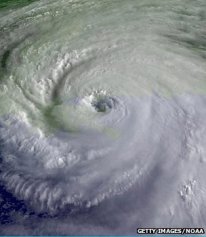Dave Matthews sings “so much to say, so much to say, so much to say…” and I find that I, too, have so much to say. Munch on these:
No Rick Perry, You Are Ignorant
Monday, Rick Perry told a New Hampshire crowd that he was not ignorant of the global warming issue. Rather, he’d call himself a “thoughtful skeptic” (“know what I mean??”). I have yet to hear him articulate a thoughtful comment as to why he is a skeptic and engage with people about the facts of the issue. Until he can (and I suspect he can’t given his inability to debate), I hold that Perry is actually straight up ignorant. Or as Cracker Barrel might say, “Eg-no-ra-moose!”
Lindsay Graham, China is Downing My Lunch—And They’re Threatening to Take My Dessert, Too
A worthy environmental snipbit this week: China states that they will not allow their per capita CO2 emissions to surpass that of the United States. Currently, China is projected to surpass the U.S. by 2017. A recent statement by the vice chair of China’s National Development and Reform Commission, Xie Zhenua, voiced a strong commitment to ensuring that this does not happen. In order to ensure that it does not, China’s five-year plan includes a 17 percent decrease in CO2 per unit of economic growth and increasing energy efficiency to 40-45 percent from 2005 by 2020.
This all in addition to the huge subsidies they are providing to solar energy systems and plug-in electric vehicles. We will see how these efforts pan out, but suffice it to say that I think China means business—both in the business opportunity sense and the business of tackling environmental issues.
It May Be Peanuts to You, but Extreme Weather Does Affect Food Prices
As previous posts highlight, we’ve seen some pretty extreme weather recently—and I’m not just talking about this weekend’s historic nor’easter. There was the tornado in Alabama, historic flooding in the Midwest (several times this year), a historic drought in Texas, and of course, hurricane Irene trotting all the way up the East Coast.
Extreme weather events have a multitude of impacts, and impacts that are now being felt beyond FEMA’s purse. These extreme weather events have harmed basic food production as crops yield less and less. These reduced yields will naturally lead to an increase in prices as supply is unable to meet the consistent demand for these goods—demand that is now much greater than supply.
We are seeing this with a staple good of a staple sandwich, the P in PB and J. Peanuts are grown all over the U.S., in the states of Virginia, North Carolina, South Carolina, Alabama, Florida, Mississippi, Texas, and Oklahoma, and of course, Georgia. According to the Peanut-Institute, peanuts are the most popular nut of choice, accounting for 67% of nut consumption (even though peanuts are technically legumes).
Unfortunately, the price for those delectable nuts is about to jump pretty substantially. CNN Money reports that Kraft will raise prices for Planters peanut butter; ConAgra increased its price of Peter Pan more than 20 percent; J.M. Smucker plans to increase the price of Jif by 30 percent. Given the peanut’s popularity, this hike is sure to be felt by many far and wide.
As this example shows, not only will extreme weather cost more to cleanup, but it can also mean that our food stuffs will cost more. Is this bye-bye, Peanut Butter Jelly time?
Read Full Post »




